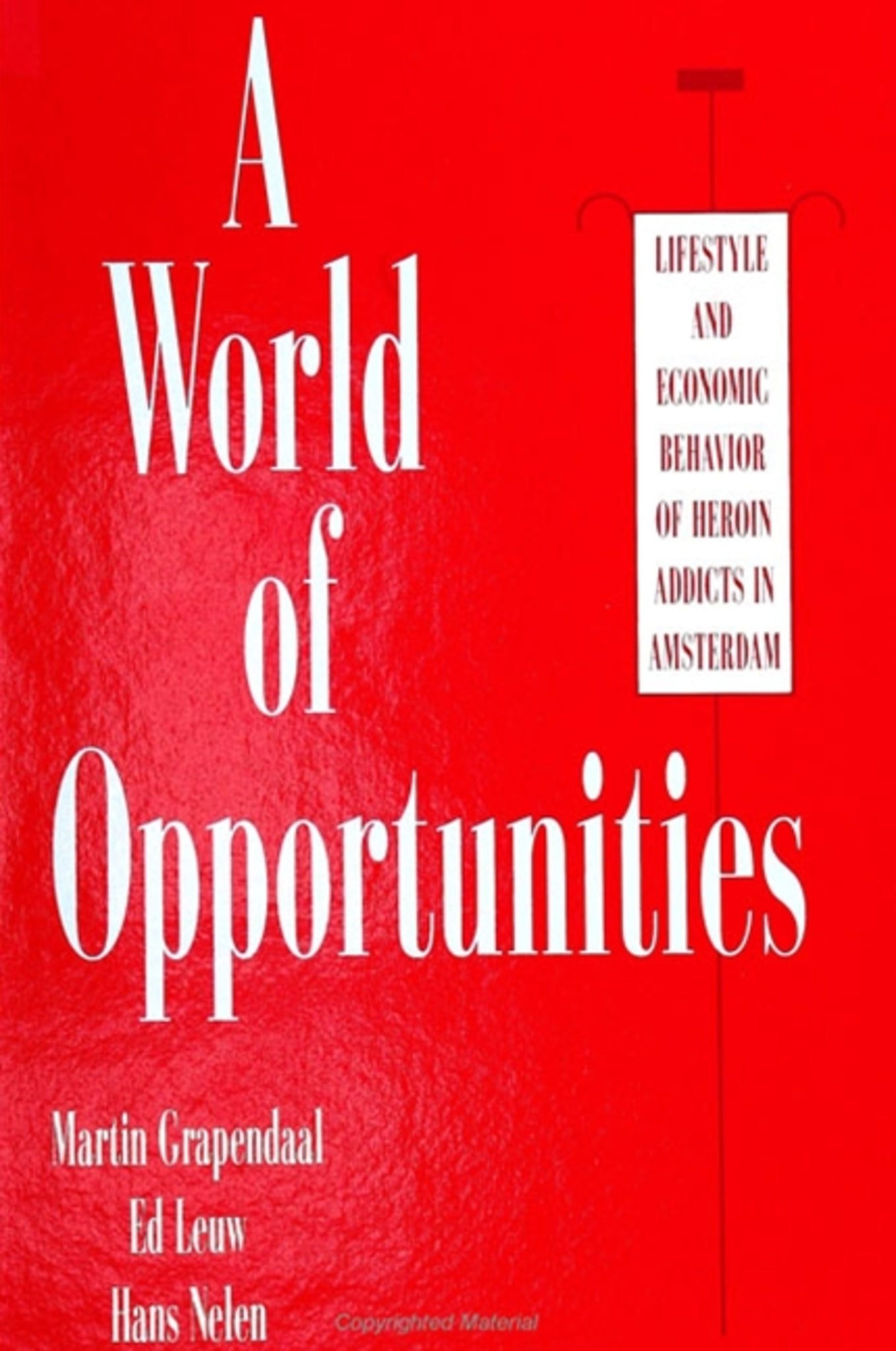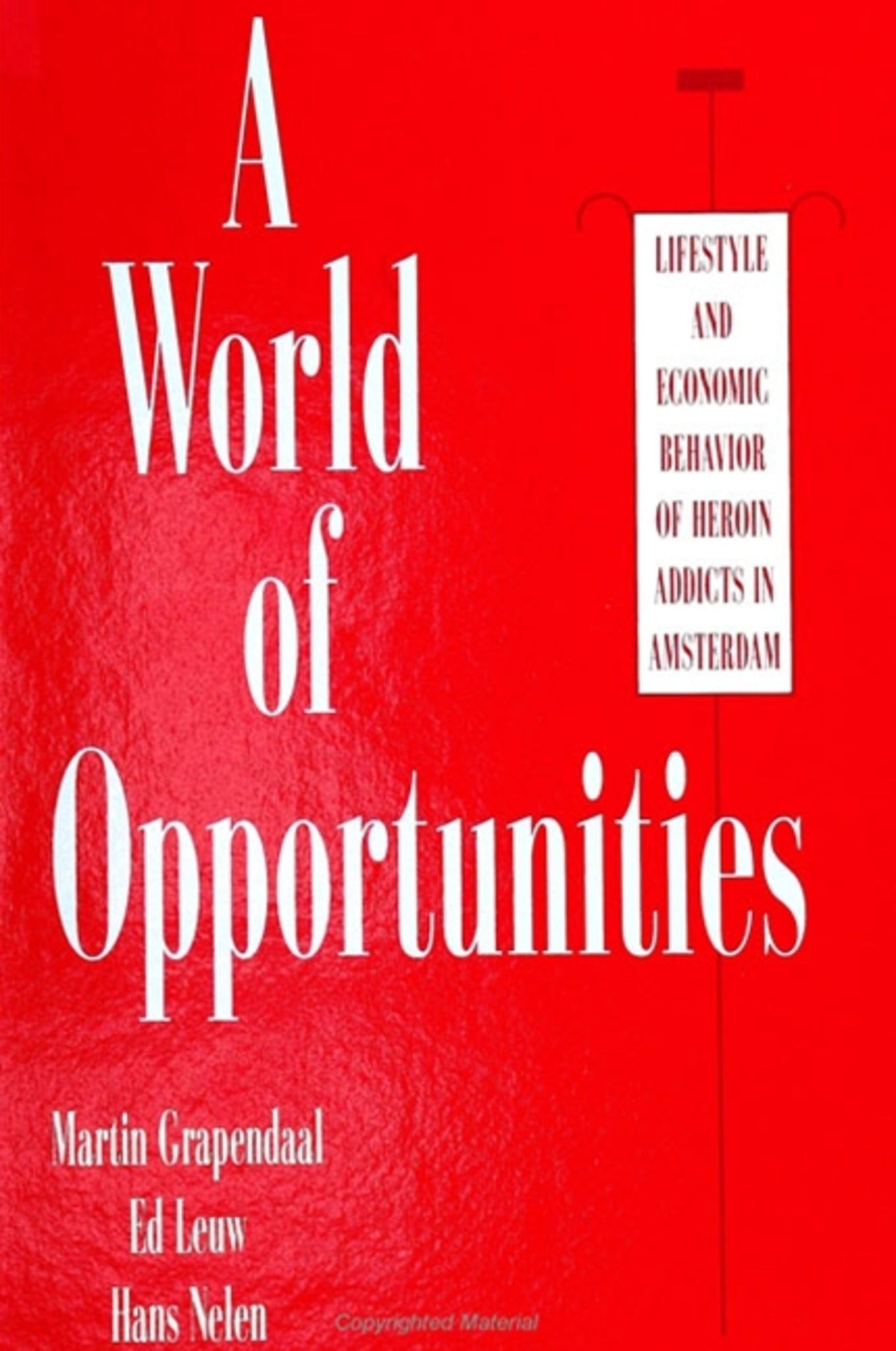We're sorry. An error has occurred
Please cancel or retry.
A World of Opportunities

Some error occured while loading the Quick View. Please close the Quick View and try reloading the page.
Couldn't load pickup availability
- Format:
-
16 February 1995

Examines the policies of the Dutch toward illicit drug use and the effect these policies have had on heroin addicts and drug-related crime.
In many countries, the debate on drug issues has turned into polarization between legalization and prohibition. This book provides a third strategy, a "compromise" between the two extreme positions.
The Netherlands, particularly its capital Amsterdam, is known for its relatively tolerant attitude to the illegal drug phenomenon. In contrast to the American ideology of radical prohibitionism that has resulted in a "war on drugs," the Dutch have adopted their own 'pragmatic' approach, which involves decriminalization of the use of drugs and some (limited) tolerance for the hard drugs scene to become open and visible within society.
The central theme of this book is to determine whether the life style and the economic behavior of heroin addicts have been influenced by the Dutch social and cultural climate. Emphasis has been put on drug related crime and the influence of methadone maintenance programs on the nature and extent of criminal activities. The results are remarkable.


Acknowledgments
Chapter 1 Introduction
Goals and Research Questions
The Drug-Political Context
Normalization of Illegal Drug Use
Rejecting a "War on Drugs"
Dutch Drug Laws and Law Enforcement Policy
Epidemiology of Deviant Drug Addiction
Principles of Dutch Social Drugs Policy:
Towards a Cultural Integration of Drug Problems.
Chapter 2 The Connection Between Drug Use and Crime: Facts and Explanations
Empirical Connection Between Drug Use and Crime
A Historical and Ecological Perspective
Comparisons Between Groups
Individual Connection Between Drug Use and Crime
Explanations
The Perspective of Causality
The Perspective of Functionality
Chapter 3 Careers in Deviancy and Drugs
Starting to Use Hard Drugs
Social-Economic Background
Place of Birth
Primary Phase of Socialization: Family and Childhood
Secondary Phase of Socialization: Education, Friends, Starting on Drugs
Course of a Drug Career
A Theoretical Model of Development
The Building of a Drug Career: From Recreational User to Full-Time Junkie
Dismantling a Drug Career: The Addict Calms Down and Looks for a Way Out
Continuity of criminal patterns in life histories
Very Criminal Prior to First Drug Use
"Moderately Criminal" Prior to First Drug Use
Noncriminal Prior to First Drug Use
Conclusion
Chapter 4 The Amsterdam Drug Scene
The Drug Scene in Amsterdam's Inner City
Actors in the Scene and Their Mutual Relationships
Interactions Between Addicts
Interactions Between Addicts and Public
Concluding remarks
Chapter 5 Income Acquisition
Ways of Acquiring Income
Social Security
Acquisitive Crime
The Market of White and Brown
The Business of Prostitution and Sex
Miscellaneous
Income in Kind
A Quantitative Picture of Income
Different Sources of Income and Their Relationship.
The Figures for Amsterdam Compared with Other Studies
A Closer Look at the Different Offenses
Periods of Abstinence and Income from Crime
An Economic Typology
Construction of the Typology
Illustrations of the Typology
The Typology in Time
Summary and Conclusions
Chapter 6 Spending and Drug Use
Spending
Categories of Expenditure
Expenditure in Figures
Drug Use
Heroin and Cocaine
Psychopharmaca, Alcohol, and Cannabis
Little-Used Drugs
Methods of Drug Taking
The Functions of the Different Drugs in the Scene
The Function of Heroin
The Function of Cocaine
The Functions of Psychopharmaca
Patterns of Use
Polydrug Use
Variability in Consumption
Summary and Conclusions
Chapter 7 Methadone Maintenance, Illegal Drug Use, and Acquisitive Crime.
Methadone Maintenance Programs and Crime: The Theory
Methadone and Crime According to the Orthodox Theory of Methadone Maintenance
Methadone Maintenance and a Reduction in Crime
Methadone Maintenance and Nonreduction in Crime
Methadone Maintenance Programs in Amsterdam
Methadone Use and the Use of Illegal Drugs
Methadone Use
Methadone and the (Illegal) Use of Heroin and Cocaine
The Distribution of Methadone and Crime
The Distribution of Methadone and the Economic Typology
Summary and Conclusions
Chapter 8 Conclusions, Theoretical Implications, and Possible Policy Consequences
The Most Important Results
The Relationship Between Drug Use and Crime
Possible Policy Consequences
Two Radical Policy Models
Reformation of Drug Policy
Epilogue
Some Considerations for the International Prohibitionistic Policy Perspective
Appendix
Methodology
Nature of the Data
Weekly Questionnaire
Reliability and Validity of Research Data
A Closer Look at the Sample
References
Index



